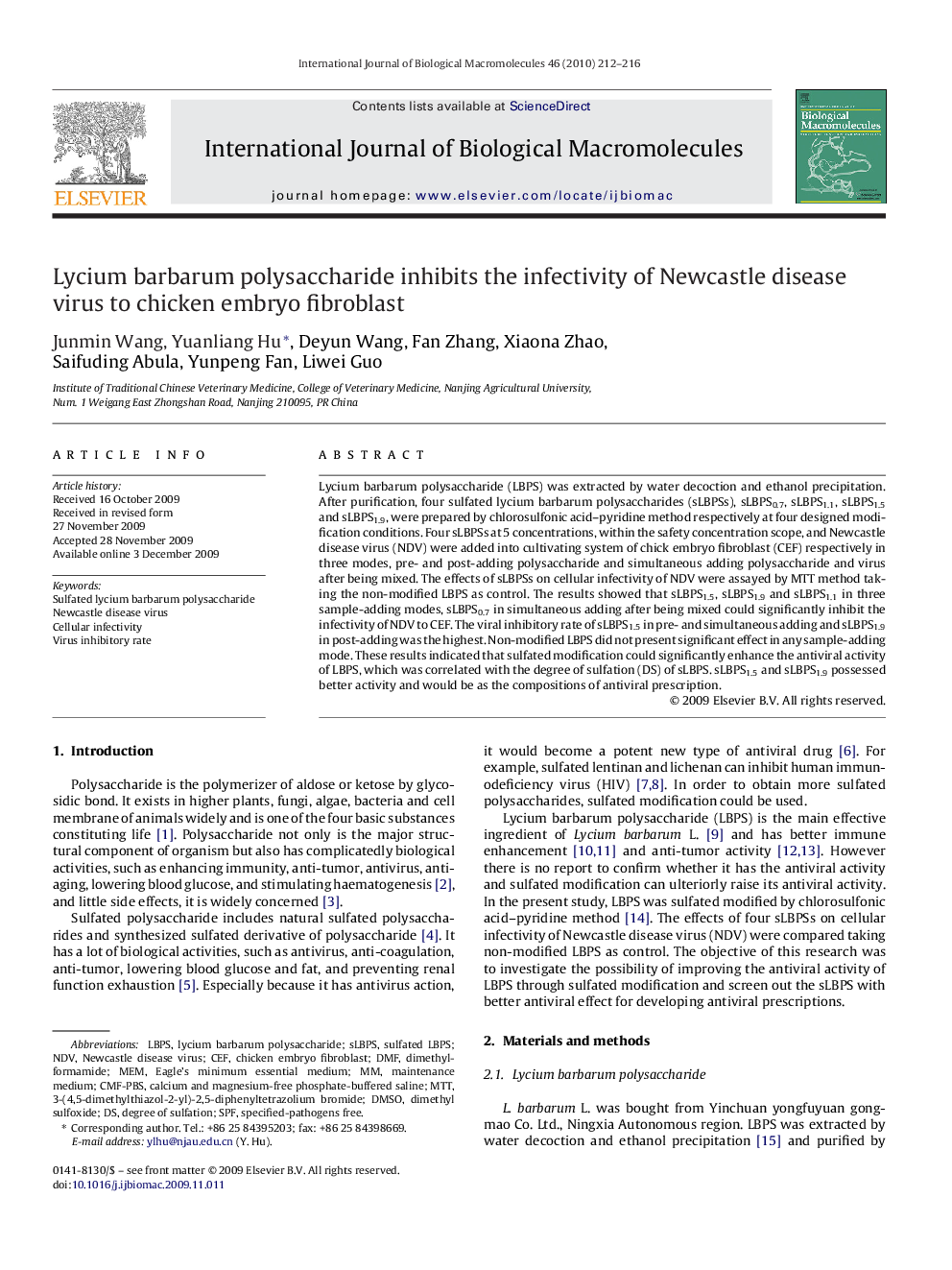| Article ID | Journal | Published Year | Pages | File Type |
|---|---|---|---|---|
| 1987242 | International Journal of Biological Macromolecules | 2010 | 5 Pages |
Lycium barbarum polysaccharide (LBPS) was extracted by water decoction and ethanol precipitation. After purification, four sulfated lycium barbarum polysaccharides (sLBPSs), sLBPS0.7, sLBPS1.1, sLBPS1.5 and sLBPS1.9, were prepared by chlorosulfonic acid–pyridine method respectively at four designed modification conditions. Four sLBPSs at 5 concentrations, within the safety concentration scope, and Newcastle disease virus (NDV) were added into cultivating system of chick embryo fibroblast (CEF) respectively in three modes, pre- and post-adding polysaccharide and simultaneous adding polysaccharide and virus after being mixed. The effects of sLBPSs on cellular infectivity of NDV were assayed by MTT method taking the non-modified LBPS as control. The results showed that sLBPS1.5, sLBPS1.9 and sLBPS1.1 in three sample-adding modes, sLBPS0.7 in simultaneous adding after being mixed could significantly inhibit the infectivity of NDV to CEF. The viral inhibitory rate of sLBPS1.5 in pre- and simultaneous adding and sLBPS1.9 in post-adding was the highest. Non-modified LBPS did not present significant effect in any sample-adding mode. These results indicated that sulfated modification could significantly enhance the antiviral activity of LBPS, which was correlated with the degree of sulfation (DS) of sLBPS. sLBPS1.5 and sLBPS1.9 possessed better activity and would be as the compositions of antiviral prescription.
